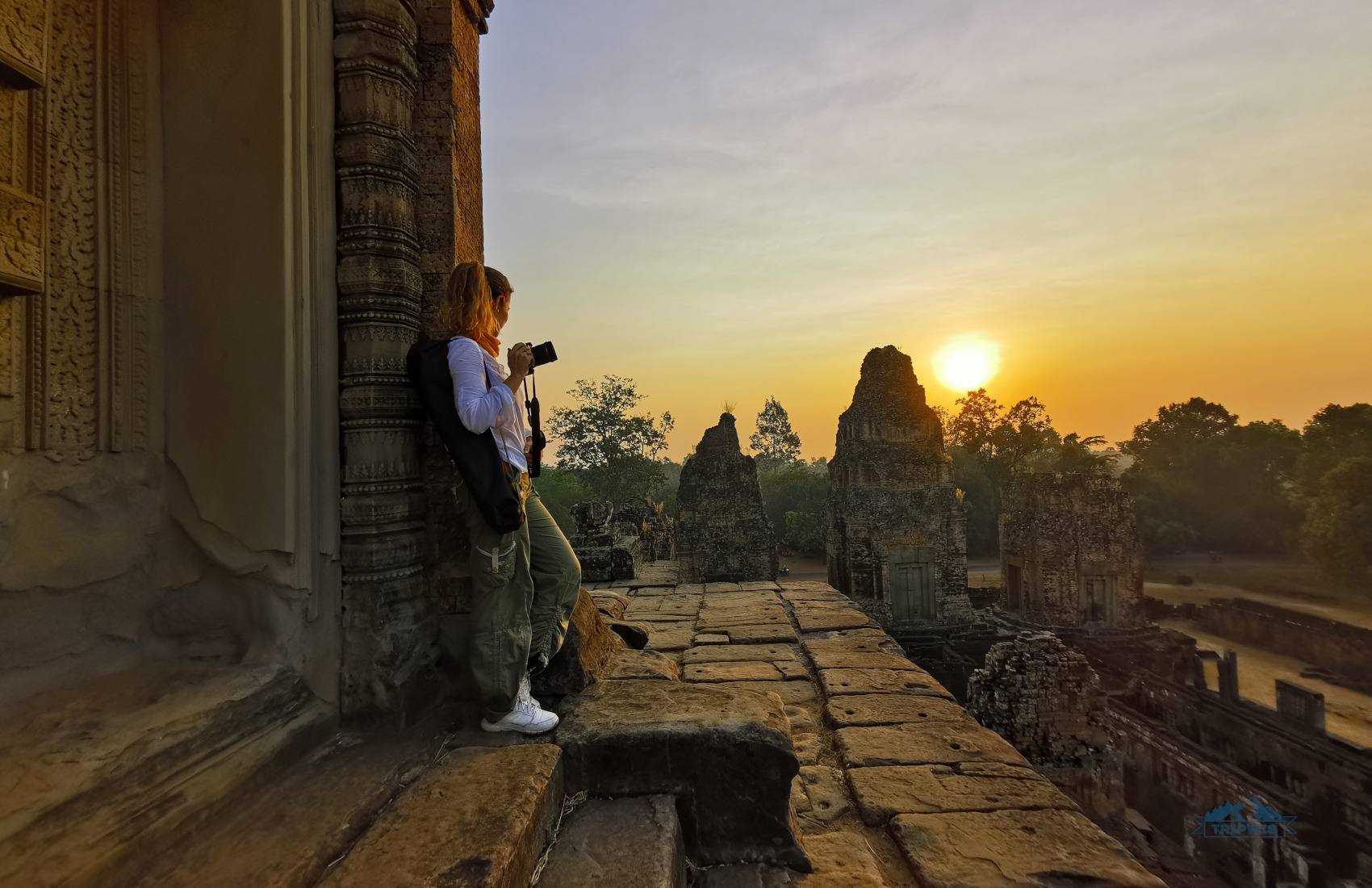
Looking for a detailed and helpful travel guide to Cambodia? You’re in luck! In this article, we will lift the metaphorical veil and answer all of what, when, and where questions you might have when planning a trip to Cambodia.
Article contents
When to Go to Cambodia?
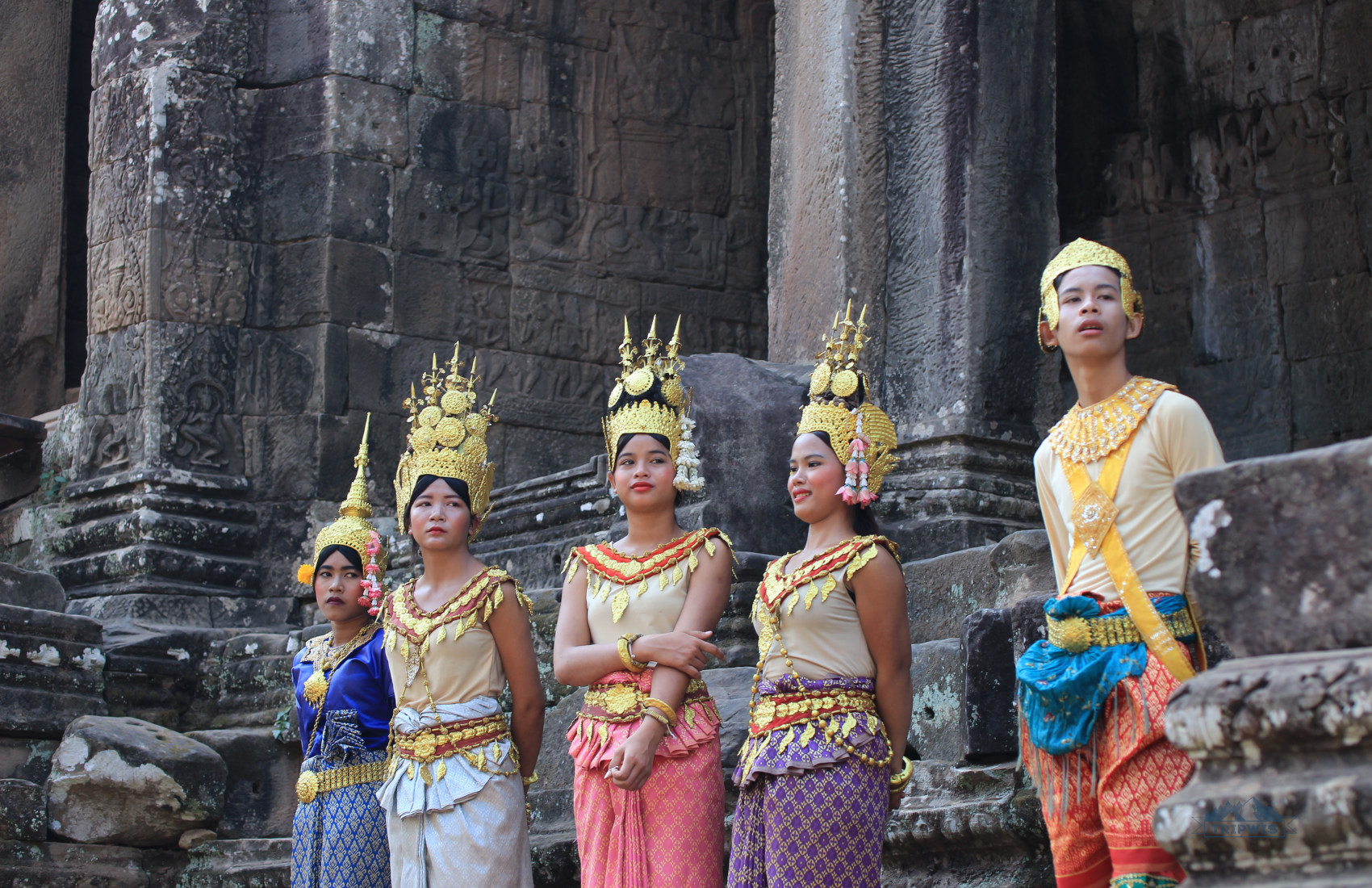
Travel season is about the same in all of Southeast Asia (and Cambodia is no exception), so when you’re planning your trip to Cambodia, keep this in mind. In general, Cambodia’s weather is balancing somewhere between hot and very hot (and don’t forget: humid). However, there are two distinct seasons that you can witness here; which can be recognized solely by the amount of precipitation.
Dry season extends from November to April, and it’s the best time to visit the Kingdom of Cambodia. March and April can be excessively hot, so if you’re planning an activity other than sun tanning, choose winter months for your travels. In December, January, and February, the average temperature is approximately 29°C/84°F (the ocean waters are as warm) in the Gulf of Siam and Sihanoukville. The city of Siem Reap is slightly hotter, with an average 34°C/93°F. There’s no ocean breeze here, since the city is landlocked; thus explaining the difference in temperatures.
Rainy season arrives in May and ends around October. July to September are generally the worst for travelling through the country. There are occasional floods in small towns and villages of Cambodia. These floods are due to strong tropical rains, but they do not last long.
Our trip to Cambodia was in early April, which would had been fine if only the rain hadn’t decided to come sooner that year. To our “luck”, our tent was leaking left and right, bringing us a fair amount of unnecessary and unforeseeable stress. To make matters worse, when it wasn’t raining, it was extremely hot, so air con was our only saviour. What we got out of the whole experience was the realization that we would never come to Cambodia in April again. Learn from our mistakes and choose the milder-tempered and more predictable winter months for your visit to the kingdom.
Visa to Cambodia
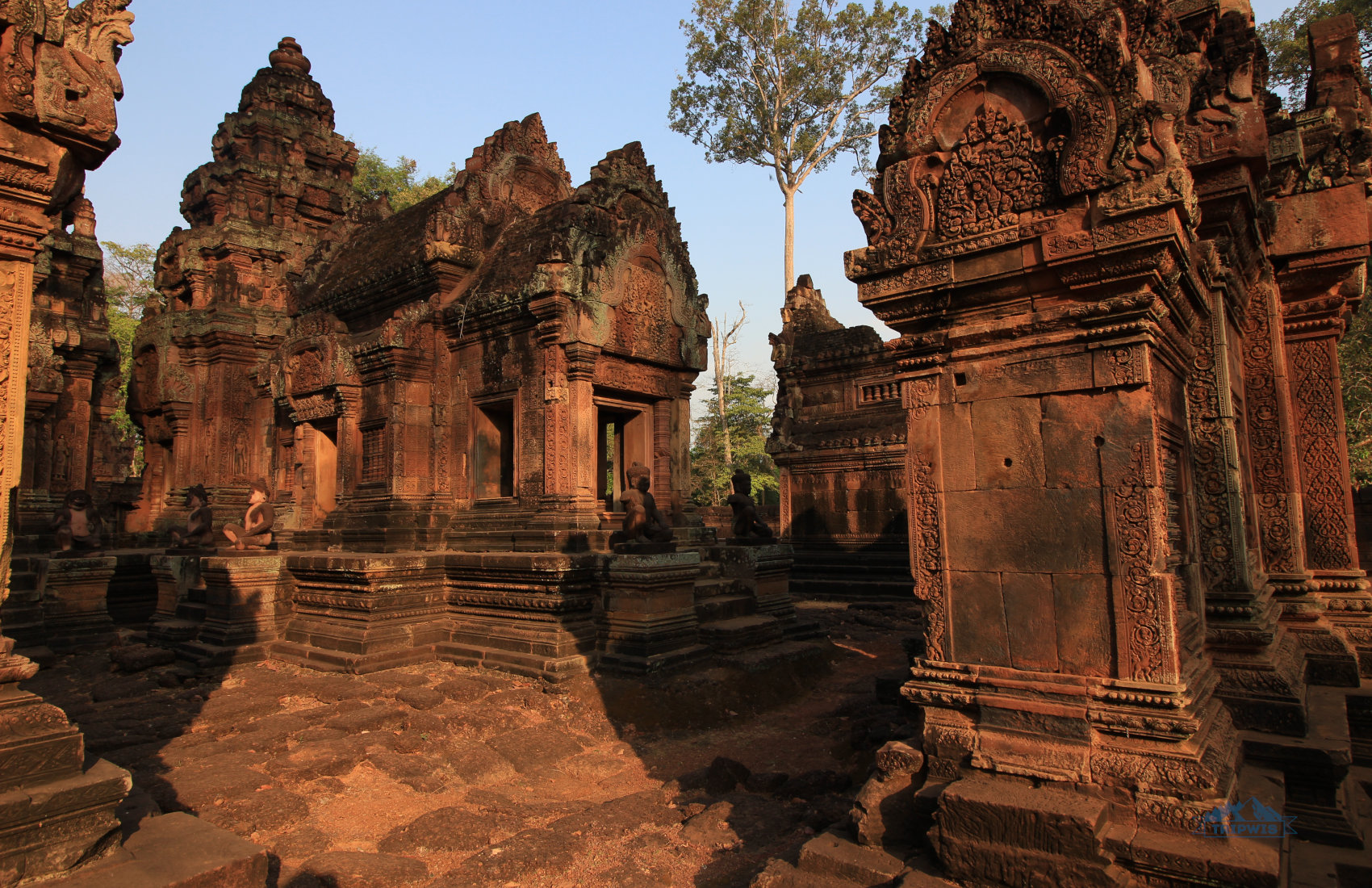
U.S. citizens need a valid passport and a visa to travel to Cambodia, but there’s no need to worry about the visa in advance. You can get one upon landing in one of three Cambodia international airports and at various border crossings in Thailand, Vietnam, and Laos. All you need is $30 in cash and a 3″ x 4″ photo of yourself (it will cost you an additional $2 if you don’t have one).
Officially, the Cambodian visa costs $30, but a cunning border guard may try to rip off an extra “five” from you. If you’re travelling with a bus company, they sometimes ask you for a $2–3 processing fee. Do not get fooled by these scams. We obtained a visa on the border with Vietnam, and we proved to the border guard that one should not pay more than $30.
If you’re planning to cross into Cambodia rather than flying into one of its airports, the best advice we have for you is to stay calm and just chill. Crossing the border into Cambodia is a challenge every tourist has to face—but it’s worth it.
A regular tourist visa provides a single entry and is valid for 30 days. If you really enjoy Cambodia and want to stay longer, you can extend this visa for another month for $45 at the immigration office in Phnom Penh or any tourist office.
You can also get an e-visa for $36 ($30 for the visa with an extra $6 for a service provider). You’ll need to complete the form online and print it out. You’ll need two copies—one for entry and one for departure. An e-visa can’t be extended.
Even though the fuss over COVID restrictions for international travel has quieted down a long time ago and you don’t have to provide a vaccination certificate to enter Cambodia anymore, you do still need to make sure you’re up-to-date with your routine vaccinations; it’s advised to get a Hepatitis A and a Typhoid shot before traveling to Cambodia (especially if you’re an adventurous eater). If you’re planning to spend time with animals during your trip, or if you just can’t go past the dozens of dogs that rummage through Cambodian streets without petting every single one of them, consider adding a rabies shot to the mix. Better be safe than sorry!
What’s There to Do in Cambodia?

You’re probably wondering how many days you’ll need in Cambodia to see everything worth seeing? Sure, Cambodia is best known for its Angkor Wat temples and beaches, but there’s so much more to explore here. So, if you don’t want a rushed vacation, you should plan on staying for at least a couple of weeks.
Here’s our bucket list of things to do in Cambodia:
1. Watch the sunrise in Angkor Wat
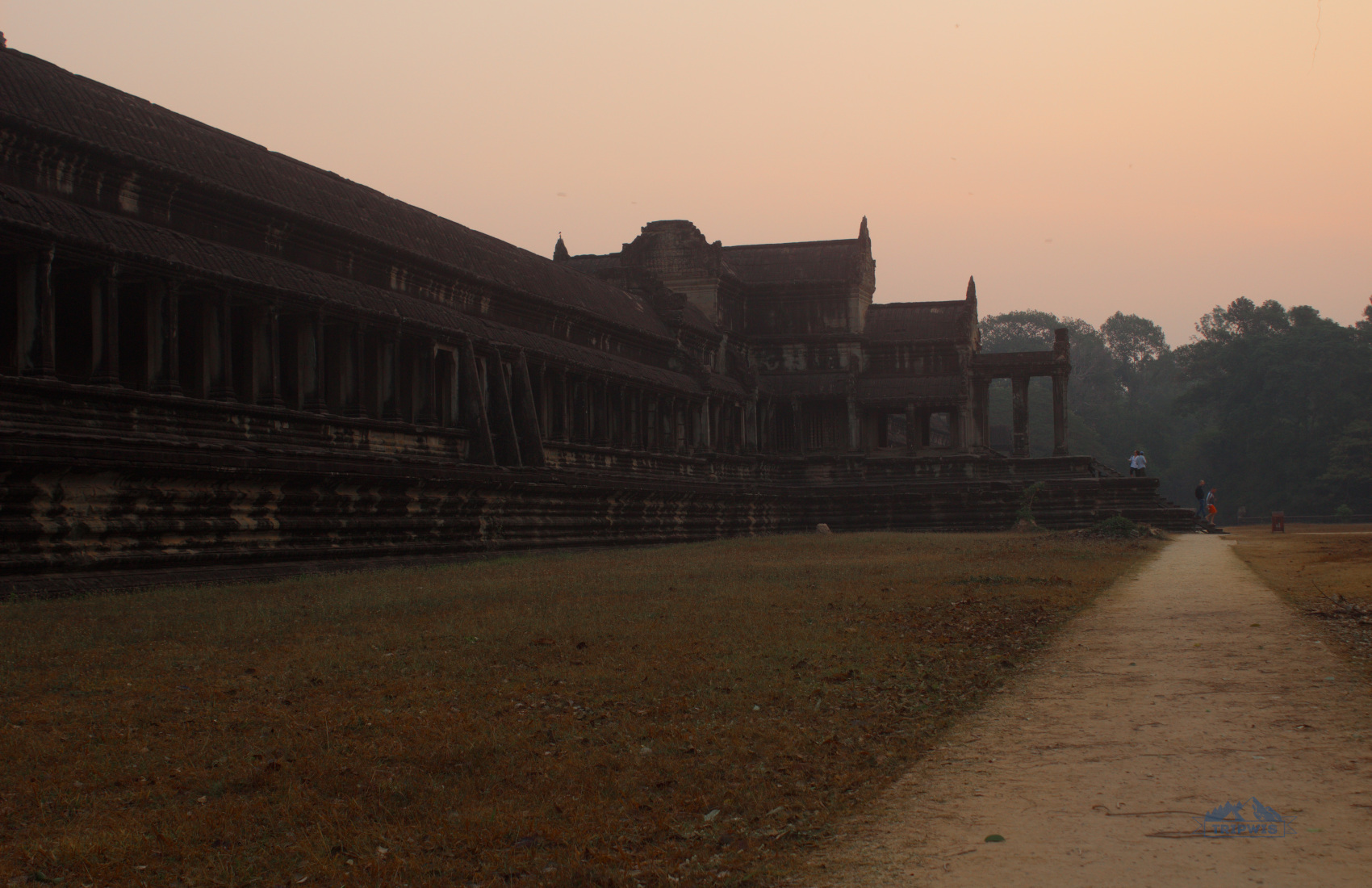
One of the main things to do in Cambodia is to explore a giant city of temples and a UNESCO World Heritage Site, Angkor Wat and Angkor Thom. How can you miss out on the largest religious monument in the world? The ancient capital of the Khmer Empire features temples and ruins dating back to the XII century. Start your exploration by watching the sunrise over Angkor Wat temple. You have to wake up at around 4 a.m. to get there, but it’s definitely a must-see. It’s a poster picture for Cambodia, since the Angkor Wat temple is depicted on the national flag.
To enter the premises, you need to purchase an Angkor Pass. It’s quite pricey, but it does include access to other places of interest, like Banteay Srei, Pre Rup, Ta Prohm, Bayon, Angkor Thom and others. A one-day pass will cost you $37, while a three-day pass is $62.
If you prefer to have a knowledgeable guide who shows you the best places for pictures while also explaining the wonderful rich history of the area, save yourself the trouble and consider booking a (sunrise) small group tour of Angkor Wat.
2. Get your Lara Croft pic at Ta Prohm
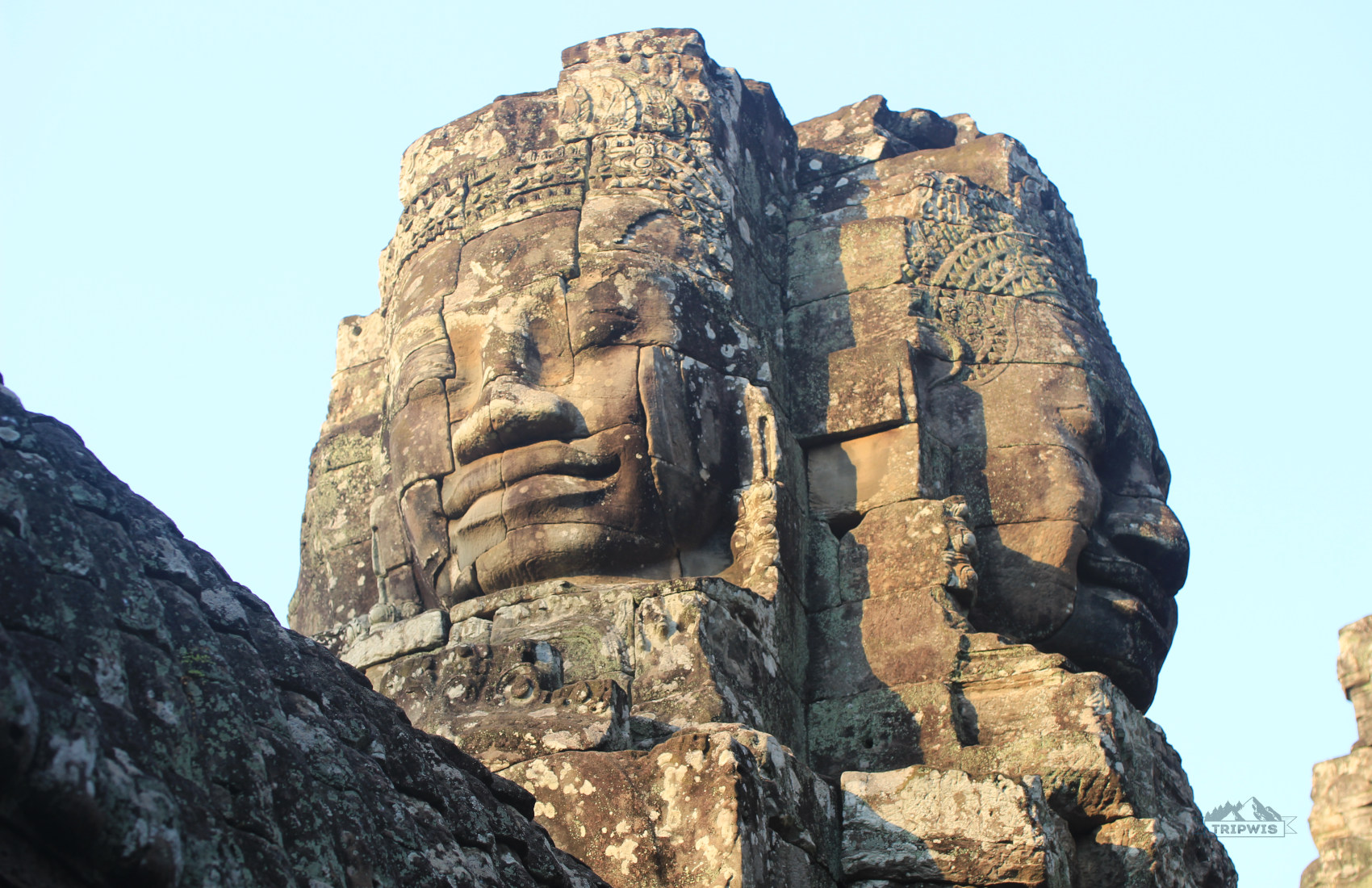
In addition to Angkor Wat, there is another temple complex called Ta Prohm. The Tomb Raider movie made it famous, and it’s truly worth visiting. You’ll see giant trees taking over the temples and beautiful nature blossoming in the ruins. What a sight!
Some practical information:
- A one-day ticket is $37, and a three-day ticket is $62. Yes, it’s worth it!
- If you are not in a rush, consider getting a three-day ticket. There are over 200 temples in Angkor Archaeological Park.
- It’s 6 km (3,5 miles) away from Siem Reap, so most people stay there.
- Hire a tuk-tuk (possibly with a local guide) for $20–$25. It’s always hot in the Angkor area, so walking or riding a bike can be challenging.
3. Visit mystical Koh Ker
Koh Ker is a unique temple complex that almost no one knows about. If you hate crowds, that’s where you should go. Calmly explore authentic ruins without tourists. The ticket price is $15. This temple is quite remote, 120 km (75 miles) away from Siem Reap in Preah Vihear province. A good idea for a low-key daytrip!
Again, if you don’t feel like organizing this whole detour, turn to the professionals of their craft and book a tour. As a rule, the average tour to Koh Ker includes a stop at the beautiful Beng Mealea Temple, as well as the comfort of a hotel pick up and drop off.
4. Learn about Khmer Rouge at Killing Fields
The Khmer Rouge was one of the most violent regimes in the history of humankind. Cambodian people lost a quarter of their population in this genocide, and it happened just 40 years ago. Visiting Choeung Ek Killing Fields outside Phnom Penh is horrifying. It’s a mass grave, and you’ll see a tower of skulls and bones—but we have to learn the horrors of history if we want to make sure that it never repeats itself.
The price to enter the site is $6, including the audio guide which does a good job of explaining the information in a concise way that is easy to understand (but hard to grapple with, as the topic is very difficult on the mind and the heart).
5. … and at the Tuol Sleng Genocide Museum
Most commonly known as S-21, this place was a former school in Phnom Penh that was turned into a place of torture for 17,000 people. Here, you’ll see the cells, blood stains, and torture instruments. The pictures are graphic, but we still believe that knowing about these things and seeing them for yourself is an important way to remember the victims of Pol Pot and his bloody regime.
The entrance fee costs $5 for adults (you can pay additional $5 for an audio guide).
6. Drive the motorbike to the top of the Bokor mountain
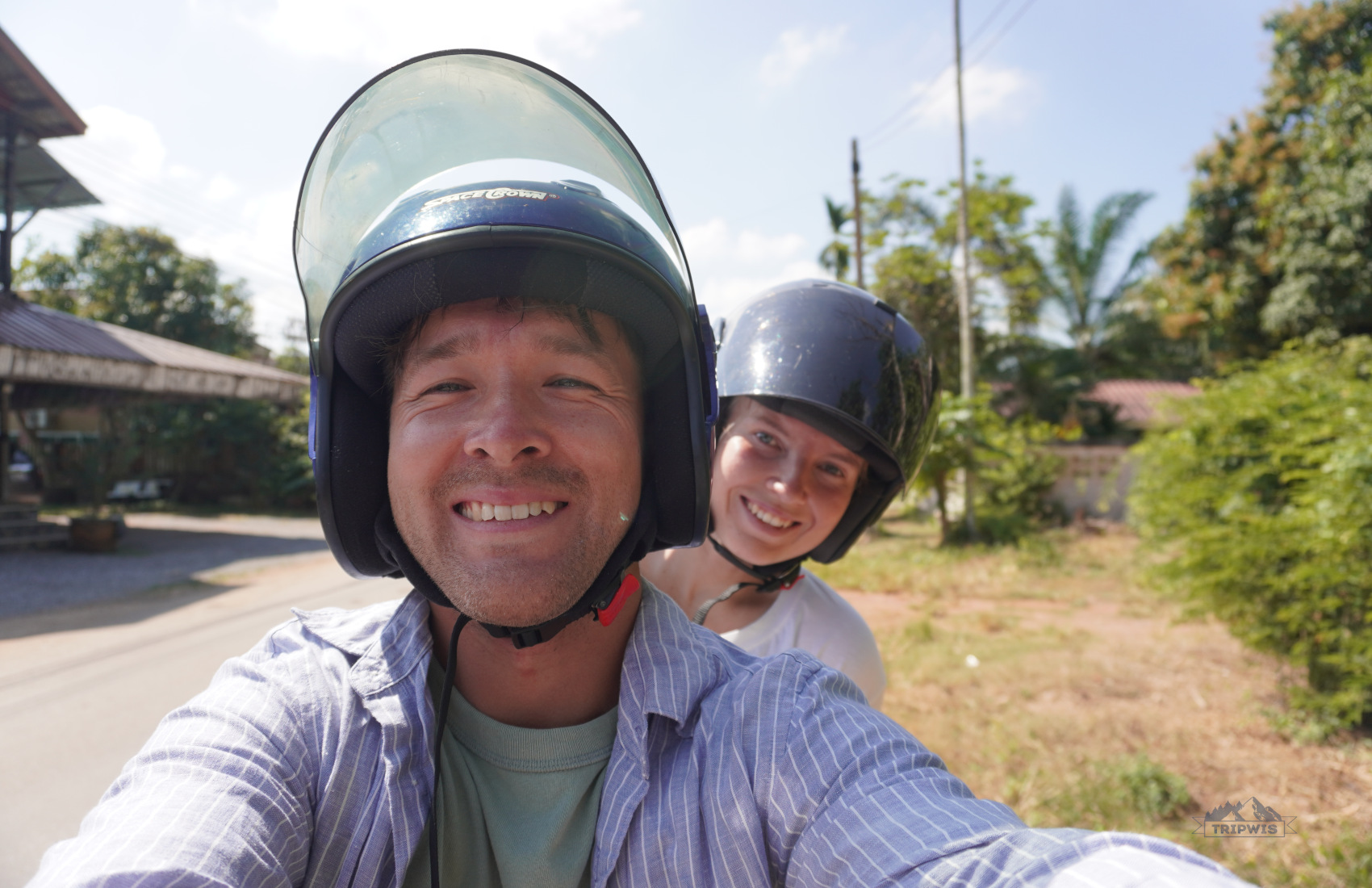
One of the top things to do in Cambodia is visiting the gorgeous Bokor national mountain park, which is 1,5 hours away from Kampot city. You’ll see the real jungle, a picturesque waterfall, and several atmospheric abandoned buildings that still have this French colonial vibe—an old-fashioned Bokor Palace casino, catholic chapel, and Black Palace. All of those are on top of the Bokor mountain. As you near the summit, watch out for sneaky monkeys: we suggest to keep your valuables close and be generous with the bananas! Bokor is the place for you if you crave the whole ghost town vibe: the area can get pretty spooky at times, with all the abandoned ruins!
You can get a bus tour to the national park from Kampot (the price for the experience starts at $30), but the trip will be much cooler if you go by motorbike. starts at $30), but the trip will be much cooler if you go by the motorbike. Renting a ride is insanely affordable: you can get your hands on a big off-road bike for under $12 a day. Prefer something lighter? A 100cc automatic scooter will only set you back about $4–5 a day. Entrance fee is just $0.5.
7. Chill at an eco-resort by the Kampot river

Kampot is a charming little town alongside the Kampot River. It has a very friendly expat community, excellent western food, live bands, and cool riverboat parties. If you head a few miles away from town, you’ll find a variety of small eco-resorts, where you can stay in a bungalow and chill by the river. The water is clean and refreshing too, so feel free to dive in. After all, one of the best things to do in Cambodia is to relax.
We’ve heard many great things about Eden Eco Village — their bungalows are great for people on a budget, with prices fluctuating from $20 to $40 per night. Look out onto the water from your personal balcony and hear the fishermen come home after a night’s good catch early in the morning (a great chance to get the whole local feel of the area).
8. Get to know local flora and fauna

You should also visit Ream National park, which is just 20 km (12 miles) away from Sihanoukville. You’ll see wild animals, birds, and a large population of monkeys and dolphins. You can visit the park either with a guide, in a jeep or by foot, but the most romantic option is a boat trip along the Prek Tuk Sap River (the price is $35).
2025 update: it seems that the area of the park is much more limited now, as the grounds were bought by some huge corporation. You can still take a picturesque walk to a giant tree, but all other hiking trails are blocked off. Mangrove boat rides have been shortened quite a bit — now they last no more than 15 minutes (with prices have gone up noticeably). You can still rent a motorbike and explore some of the unsealed routes, but they haven’t been very well maintained lately. The area is still beautiful, but various building sites in a former natural heaven definitely leave you feeling some type of way.
Don’t worry, there are a lot of other areas in Cambodia where you can go to enjoy the evergreen forests and unique wildlife, and Keo Seima Wildlife Sanctuary is one of them. You can observe elephants, monkeys and dozens of birds in their natural habitats; the guided tours are held by native people, and the price you pay for the tickets is considered to be a donation to the whole project of conservation.
9. Tour around Floating Villages
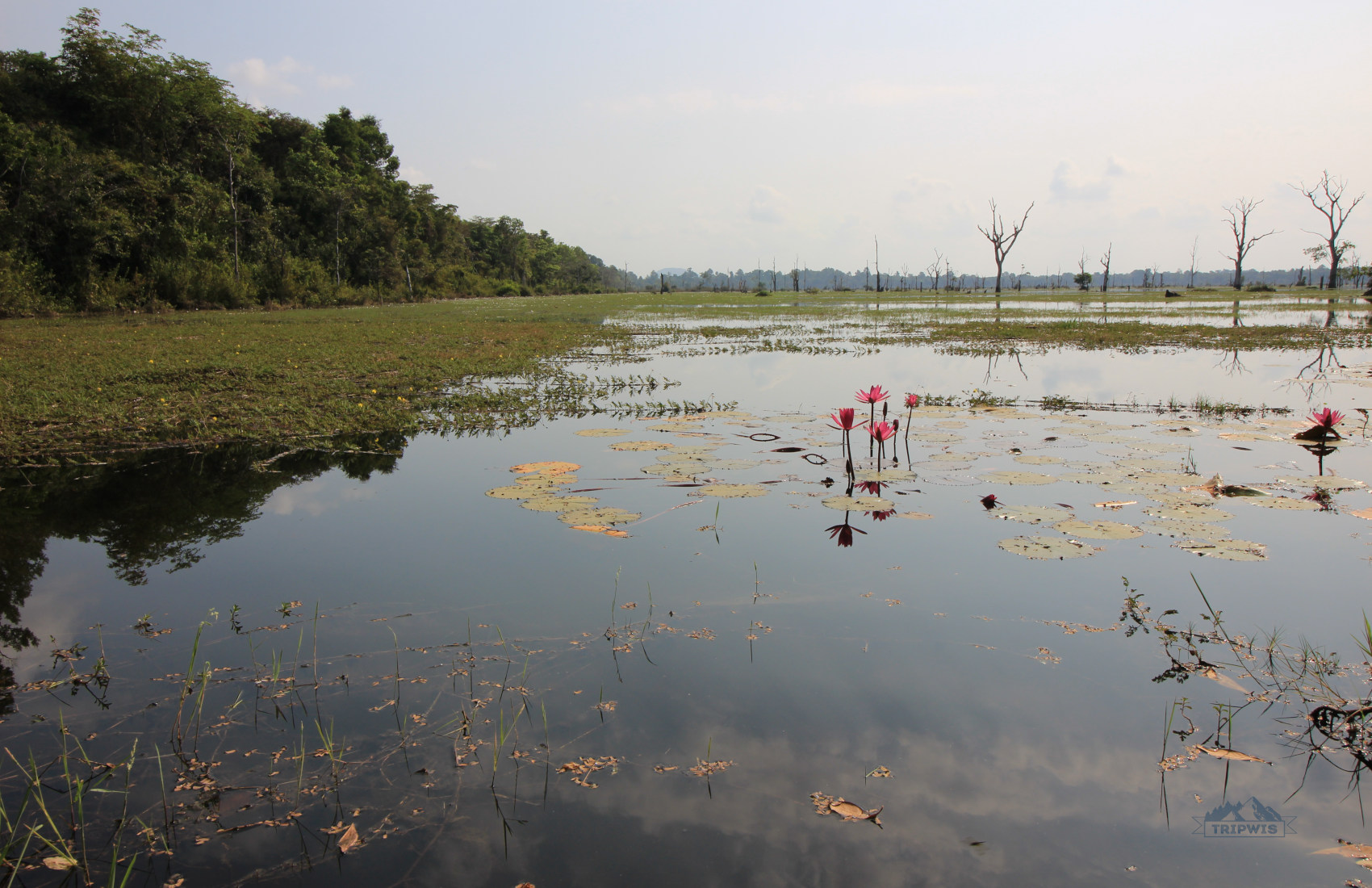
Tonle Sap Lake is the largest freshwater lake in Cambodia. In dry season, its depth is only one meter (3,3 feet), but in rainy season, it can get to 10 meters (32 feet)! Tourists come here to see the Floating Villages.
Depending on what you expect to witness, you can either tour Floating Villages during wet season (when the houses are literally floating) or during dry season (when their long stilts are exposed, giving them a Tim Burton vibe).
There are a few villages on the lake. To be honest, they are all alike, so, if you’ve already visited one in Thailand, you can skip the destination altogether. Plus, they say that these places are a breeding ground for scam artists, so if you have a hard time saying “No” to people, avoid the villages like the plague.
10. Visit Crab Town
The coastal town of Kep in the southern part of Cambodia is a beautiful French colonial resort town with amazing ocean sunsets, secret beaches, salt fields, and a famous crab market. You can’t really swim here, as the waters are shallow, but it’s a nice place to sip tropical cocktails and relax in a hammock—or get a nice Khmer massage with coconut oil ($10–$15). If you feel like stretching your limbs a little, head out on a little hike on Kep Mountain Trail. That way, you’ll work up your appetite to go back to Crab Market and order all the seconds you want!
Prices in Cambodia
The currency of Cambodia is the Cambodian riel, (KHR). 1 US dollar is around 4,000 Cambodian riel.
Fortunately, you don’t need to worry about currency exchange, as all businesses in Cambodia are okay with tourists paying in US dollars. However, be ready to accept the change in riels and save it for the small purchases. Also, don’t try to break a $50 bill on a small purchase of a bottle of water: you will get plenty of side-eye from locals for this decision.
Transportation

The craziest thing about Cambodia is probably its roads. The rules are… well, there are no rules. Officially, the speed limit for cars is 40 km per hour (25 mph), and it’s only 30 km per hour (18 mph) for motorbikes. In reality, you’ll see five people on one motorbike going 70 km per hour (45 mph) on a dirt road. The traffic situation in Cambodia is generally dangerous, so be careful!
Going by bus is an option when you’re moving between the cities of Cambodia. Overall, the bus trips here are not that pleasant, with the regular delays and broken AC. If you’re planning a long distance trip, Giant Ibis is probably the best bus company to choose. Its schedule is pretty reliable and the buses are comfy. Be sure to check if they operate on the route you need. Giant Ibis is slightly more expensive than other Cambodian bus companies, and you should book a ticket in advance, as it’s everyone’s favorite.
Onсe you’re in the city, forget about public transportation. You’ll need to rent a motorbike or a bicycle, or you can hire a tuk-tuk. The latter can be done safely through Grab App — a super cheap ride sharing app: you’ll spend around a dollar per ride. Keep in mind that electric tuk-tuks tend to be even cheaper! Why use the app? It’s a guarantee that the driver won’t try to rip you off by taking the unnecessarily long way or by changing the amount of money you’ve agreed on.
You can rent a motorbike. If you’re not an experienced motorbike rider, avoid going on the highway — it’s extremely dangerous because of the load trucks that go at a superfast speed, pushing motorbikes to the side of the road.
Rental price for a motorbike varies from $10 to $20 per day. Monthly rental costs around $200. When you rent a motorbike, always ask for a helmet. First of all, it’s a common safety precaution. Secondly, the police always stop foreigners with no helmets on; so put it on if you don’t want a fine of $15 or more. Sometimes (but not too often) they can charge you $10–$50 for not having a proper motorcycle license.
Another option is to rent a car. Tourist offices can arrange a car for around $40-$70 to go between cities, to the airport, or just drive around for the day.
Gasoline is approximately $1,2 per liter. If you can’t find a petrol station, you can buy 1 or 2 liter gasoline glass bottles in the villages; they’re usually sold alongside the roads, so you can’t miss them.
One more option is to rent a bicycle. It’s cheaper—$3–$8 per day, depending on the quality of the bike.
Food and Cuisine

Cambodian cuisine is similar to Thai (although not as spicy), except for those dishes that the French brought during the colonization. Khmer people eat rice, seafood, and baguettes. If you eat amongst the locals, food will be very cheap. Cambodian street food prices are a bargain. One buck will get you a couple of skewers, a papaya salad, or Khmer dumplings.
But keep in mind that eating on the street in Southeast Asia is always a gamble. There have been many times we’ve witnessed sellers in street markets drop food on a dirty floor and then calmly put it on someone’s plate. Also, meat can sit around a market stall for days, so look closely at everything before eating anywhere. And, yes, most of the dishes have meat in them, so if you’re a vegetarian, your local food options are stir-fried vegetables with rice or noodles or an egg sandwich.
Some local food you should try:
- Amok (fish curry) is a Khmer specialty — $3-$7
- Lok Lak is a stir-fried beef or pork slices with salad and rice — $3-$5
- Sticky rice in a banana leaf with mango or banana slices — $2-$4
- Ban Chao is a crispy pancake with different fillings — $2–$3
- Coconut vegan ice cream — $1-$2
- Stay hydrated with a green coconut — $1–$1,5 (ask for a cold one)
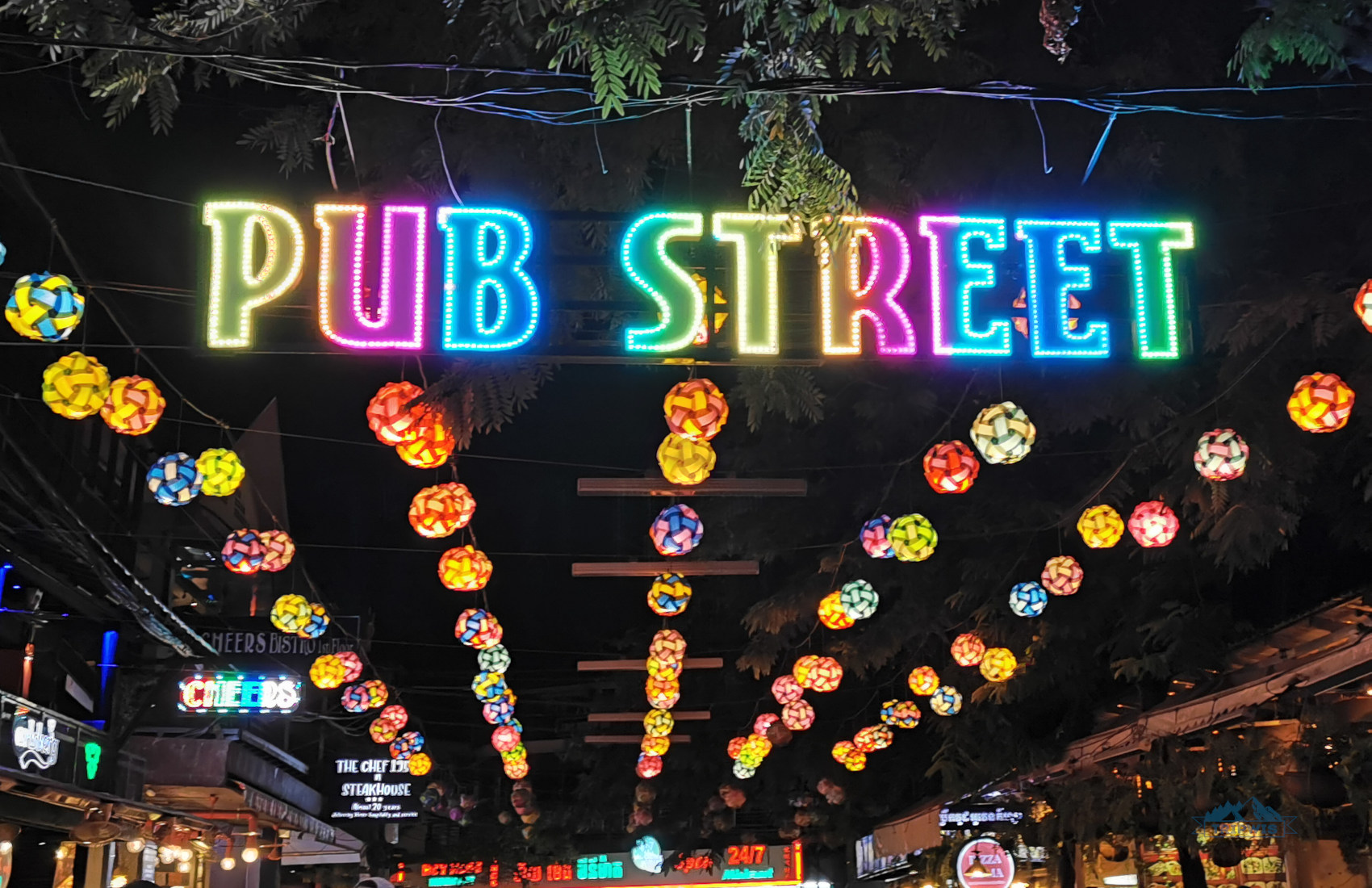
If you go for street food (such as fried noodles or rice with meat), it costs from $2 to $7 per meal. You can find all sorts of crazy delicacies to try in the streets of Cambodia: fertilized eggs, tarantulas and scorpions on sticks, stuffed frogs… The list goes on, but if you’re particularly squeamish, we recommend you stay away from the vendors who serve these particular dishes.
Average grocery bill in a supermarket is about $5:
- A bottle of water is $0,5-$1
- 1 kg (2 lb) of mango is from $1
- A loaf of bread is $1-$2
- Local beer Angkor, 0,33 l (11 oz) is $1
- Yogurt is $0,8–$2
In Siem Reap, we recommend looking for food at a party area called the Pub Street. Yes, it’s touristy; but because it’s crowded with customers, food is guaranteed to be fresh. The Red Piano cafe is a hip place for dinner because they claim that Angelina Jolie herself dined here during the shooting of the Lara Croft movie.
Here’s a little sidenote for you. You’ll see prices skyrocketing in resort towns, but most people would agree that a $20 lobster and $7 glass of champagne in a top-notch restaurant with an ocean view is an affordable luxury.
Where to Stay in Cambodia?
 |
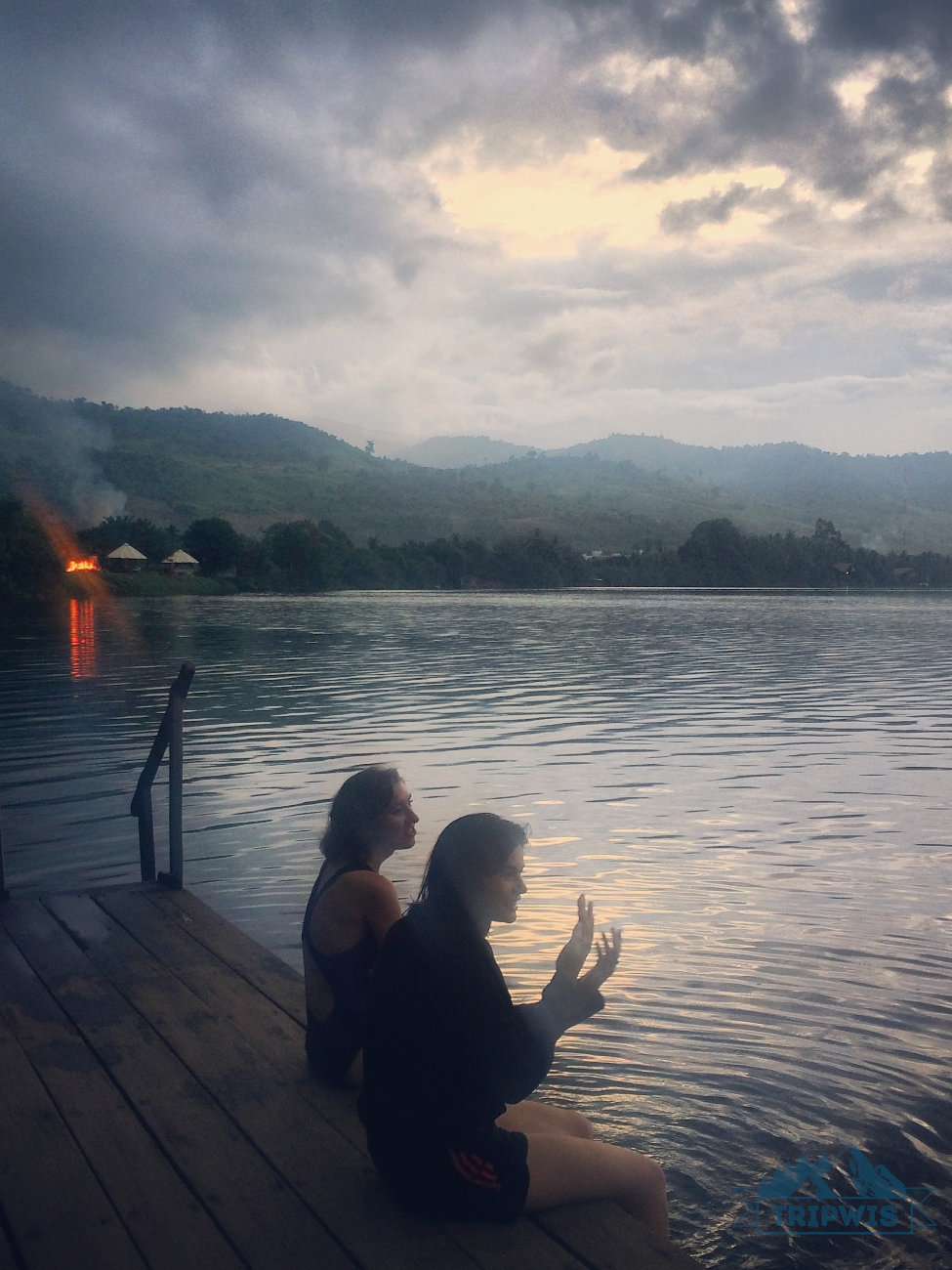 |
We can recommend the following hostels we stayed at:
- The Siem Reap Chilled Backpacker — a great cheap hostel choice, especially favored by digital nomads. The rooms are nice for the price you pay; plus, it’s not one of those party hostels that disturbs your sleep every night of your stay.
- Onederz Hostel Phnom Penh — a wonderful riverside hostel with an amazing location: the Royal Palace is a short 5-minute walk away!
Despite the fact that Cambodia is filled with tourists keen on seeing ancient Angkor Wat and ready to pay top dollar to do so, accommodations are quite affordable. In fact, we found the cheapest hostel room in all of Southeast Asia in Cambodia during our first trip here. For only $2 a night, we slept in a comfortable 8-bed dorm in the center of Siem Reap. Not bad, right? Now, the price of accommodation has gone up a little, but it’s not unheard of to get a bunk bed for $8 or less.
We also discovered that you can spend the night in Buddhist temples for free, which is so much more than just an opportunity to save money. You’ll get to know the locals and have a unique experience. In Kampong Cham, we spent the night in the pagoda at Nokor Bachey. In Siem Reap, we stayed in the pagoda at Wat Kesararam.
There’s also an option to travel between the different regions of Cambodia by an overnight bus. That way, you kill two birds with one stone: you sleep (although not as soundly as you would on an unmoving bed) and cover substantial ground at the same time. Side note: usually the beds are fit for two people, so if you’re traveling alone, there’s a chance you’ll end up sleeping next to a complete stranger!
Trip.com or Booking will get you plenty of options for any budget. Next are the more luxurious hotel suggestions, if you want to treat yourself to a nice room:
— 4* Royal Crown Hotel (Siem Reap) is a hotel located across the Siem Reap River with rooms going for only $50 a night. Probably, this happens in Cambodia only… You’ll enjoy two outdoor pools, free transfer to and from the airport, and close proximity to the famous Pub Street.
— 4* iRoHa Garden Hotel & Resort (Phnom Penh) is an oasis amongst the city’s madness. The hotel features a restaurant in the 1930s mansion, as well as a small garden with a pool.
— 4* Independence Hotel Resort & Spa (Sihanoukville) features breathtaking views of Gulf of Siam, comfy spacious rooms, and wide terrace to sunbath and chill.
— 4* White Boutique Hotel and Residences (Sihanoukville) is top-rated. The hotel features all possible amenities, including a massage room, gym, and a live band playing in the evening.
— The owner of a 3* Phoumrumduol Bungalow (Kep) is an awesome storyteller. You’ll have the most pleasant evening listening to his stories.
Beaches in Cambodia

What is there to do in Cambodia if not lie on white sandy beaches? The beaches are a bit wild and not too crowded. Some of the best beaches are described below.
Sihanoukville
Sihanoukvile is perhaps one of the most popular resort towns in Cambodia. It was founded by the French in 1950 and has been developing very fast in recent years due to Chinese investments. China has built many new hotels, resorts and casinos in Sihanoukvile, and it’s slowly becoming a large, international city.
- In the northern part of the city you can find Victory beach, which was previously called Russian beach. Now, Russian immigrants are spread out all over the city, so it’s no longer a Khmer Brighton Beach. It’s located near the port, so it’s not a pleasant swim. However, there are many cafes and plenty of accommodations for any budget.
- Next is Hawaii beach, especially loved by the locals. Like the previous one, it’s not the cleanest and you’ll definitely see fuel stains. On the other side, Hawaii beach has huge pines along the shore that provide shadow and shelter from the scorching hot sun.
- Further out rests the Independence beach. It’s clean, and the water is nice as well.
- Next is Sokha beach. Most of it belongs to the five-star Sokha Beach Resort, so it’s very clean. A small piece of it is open to all visitors.
- Serendipity beach is located in the city center. It’s noisy, overcrowded and mostly unpleasant.
- If you’re keen on staying on the mainland, consider Otres, the most remote beach. It’s not as wild as it used to be, but it’s much more pleasant than Sihanoukville. It’s divided into three zones: Otres 1 is the busiest; Otres 2 is the less crowded and calmer; and the Otres village features cool parties and an artsy atmosphere.
You’ve probably gathered by now that you won’t find paradise beaches in Sihanoukville. Since there is nothing else to do in the city, we advise you to go straight to the islands, which are definitely worth visiting.


Choose the island that feels perfect to you:
— Koh Rong is the biggest island. It’s also the ultimate party island. It’s a great place for a pub crawl, full moon techno parties, disco nights, retro, you name it. The island is fun but loud and overwhelming.
— Koh Rong Sanloem is a paradise you’ve been looking for. It’s serene and ideal to go paddle-boarding, snorkeling, and bathing in calm turquoise waters. Note that the so-called Lazy Beach is the cleanest of all the beaches on the island: other ones face the ever-growing trash problem. It breaks our heart to see what humans can do to the once pristine environment of the island.
— Koh Ta Kiev is eco-friendly and wild. Connecting with nature is not a problem, but there can be power shortcuts, no phone reception, and no fresh water. Probably, it’s worth it once you see the bioluminescent plankton shining in the ocean at night.
There are more islands to explore—Kaoh Damlaung, Song Saa, and Koh Thmei. You can get there easily—all tourist agencies sell tickets to speed ferries to Koh Rong and Koh Rong Sanloem, which cost $30 for a roundtrip and take 45 minutes. Other islands are accessible by speed- or longboats. If you don’t have too much time, get a one-day island tour from Sihanoukville ($25–$30).
Remember that during the rainy season the waves are huge, so some islands and beaches might be closed during summer months.
Our Travel Tips and Essential Info

If your comfort zone demands great infrastructure and good service all around (and you are not prepared to compromise your comfort), choose Thailand over Cambodia. The latter is still on its way to becoming a mass-tourism destination.
On the other side, that’s also why you should visit Cambodia before it becomes the next Thailand or Vietnam. Don’t get us wrong, those are great countries to travel to, but haven’t everyone already been there, huh?
Why choose Cambodia?
+ Cheap food, accommodations, and tours… everything is cheap!
+ Uncrowded beaches, clear sea, and the opportunity to relax in the islands
+ Nice and helpful local people
+ Tropical weather
Not so fast, there are some cons:
— Big cities of Cambodia are smelly and dirty
— Undeveloped infrastructure
— Bad roads. That means be extra careful while driving. The dirt roads are especially dangerous—it’s like riding on sand—so go extra slow.
— Prostitution and child labor exploitation is a very common thing
— Expensive healthcare system for foreigners, always get an insurance
Budget to Travel to Cambodia
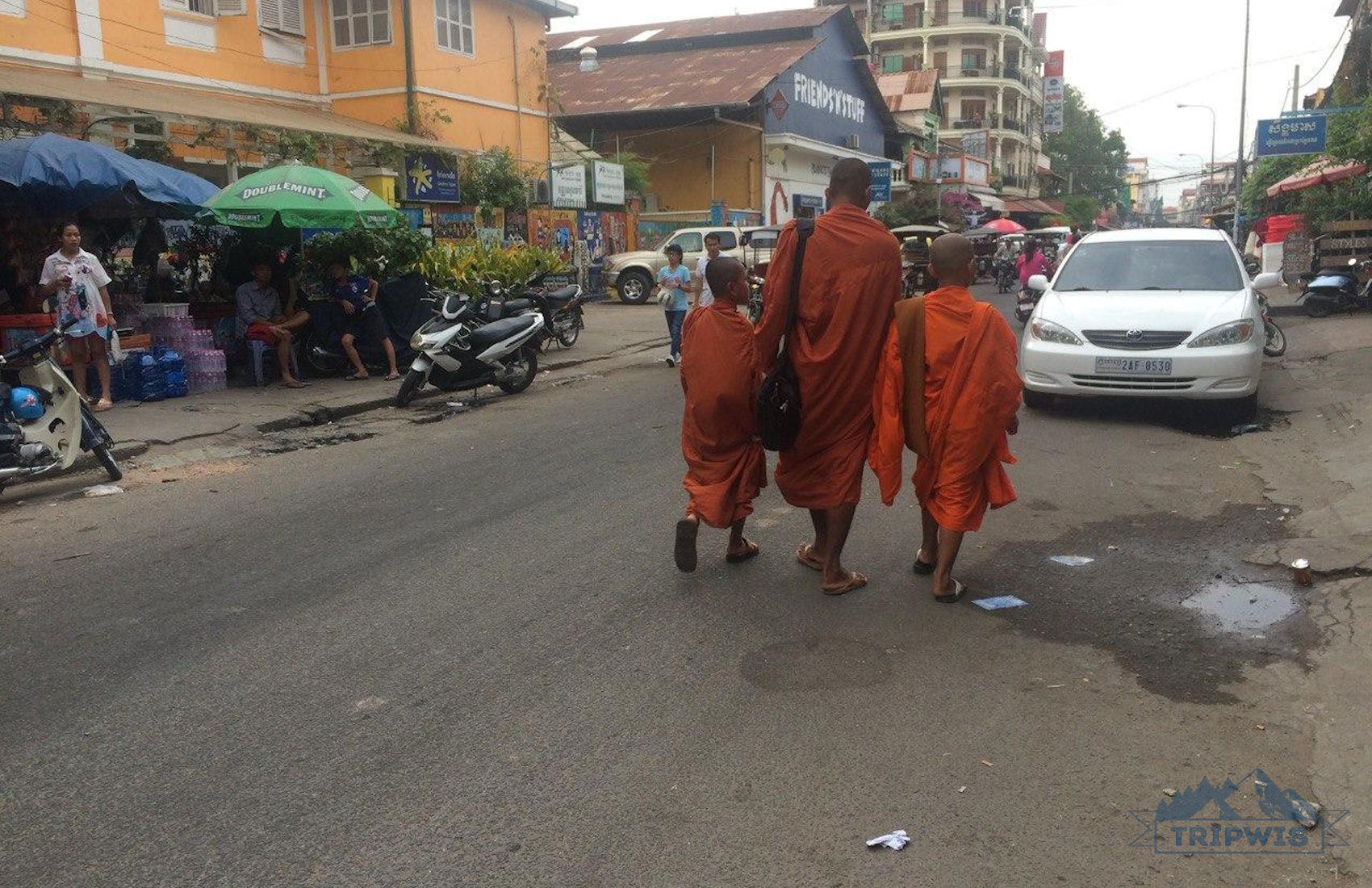
Upon arriving in Cambodia, you will find it to be quite budget-friendly. However, getting here can be expensive. Airfare varies depending on where you are travelling from. Generally, flying to Phnom Penh is cheaper than flying to Siem Reap or Sihanoukville. You can also travel through Thailand. First, fly into Bangkok, then ride through Thailand or take a flight on a low-cost airline, such as Air Asia. There are tours around Cambodia starting from Thailand, but you are better off on your own. Trust us.
Here is our estimate for a week (per traveler):
Flight: $600–$1000
Food: $180
Hotels: $70-$125
Daily tours and entrance fees: $120-$160
Total: $980–$1460
Reading reviews about Cambodia will not provide you a full picture. Most of them say that prices are low and Asia is dirty, dusty, chaotic, and terrifying with poverty everywhere and crazy drivers on the roads.
These statements are true to some extent, but if you look deeper into the locals’ way of life, you’ll see that they’re quite happy and content to be living here. You have to experience Cambodia first hand to be able to come to your own conclusion about this place. We hope that our guide to Cambodia made the travel planning a little easier for you.
We’re very curious: what was your impression of Cambodia? Tell us in the comments below!